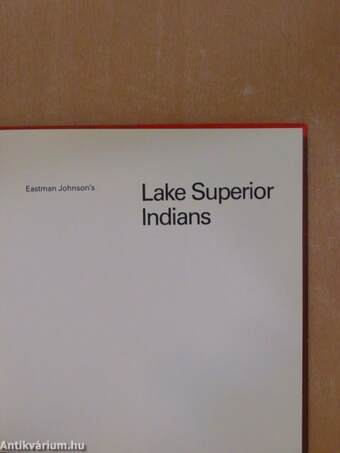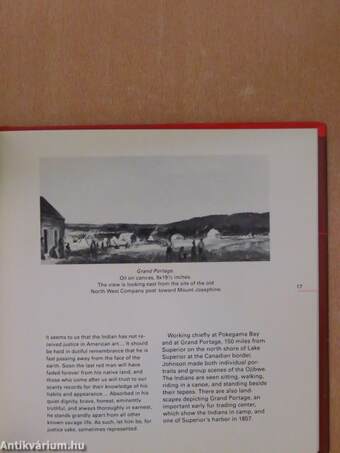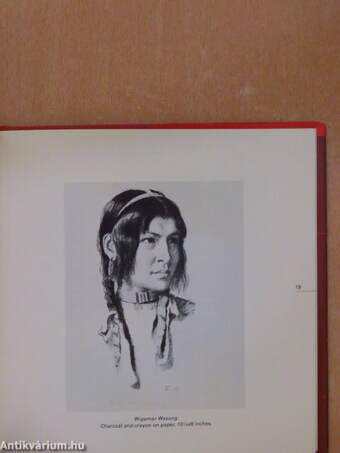1.062.389
kiadvánnyal nyújtjuk Magyarország legnagyobb antikvár könyv-kínálatát

VISSZA
A TETEJÉRE
JAVASLATOKÉszre-
vételek
Eastman Johnson's Lake Superior Indians
| Kiadó: | Johnston Publishing Inc. |
|---|---|
| Kiadás helye: | Afton |
| Kiadás éve: | |
| Kötés típusa: | Vászon |
| Oldalszám: | 69 oldal |
| Sorozatcím: | |
| Kötetszám: | |
| Nyelv: | Angol |
| Méret: | 19 cm x 18 cm |
| ISBN: | 0-942934-30-X |
| Megjegyzés: | Fekete-fehér fotókkal. |
naponta értesítjük a beérkező friss
kiadványokról
naponta értesítjük a beérkező friss
kiadványokról
Fülszöveg
Eastman Johnson was the most |B|BBB
celebrated American genre painter of
his era. Lionized during the 1860s and
1870s for his sensitive paintings of
country life, his subjects were com-
monly haymakers and cornhuskers,
cranberry pickers and maple sugár
makers. Less well-known is a series of
paintings and drawings made earlier
in his career of the native Ojibwe at
Laké Superior. Curiously, he never
chose to exhibit these pictures. The
collection nonetheless ranks with the
finest examples of Indians in art in the
nineteenth century.
Working during 1856 and 1857,
chiefly at Pokegama Bay and at Grand
Portage, Johnson was obviously en-
chanted with his Indián subjects. His
portfolio reveals a proud people, dis-
inherited, yet possessing an instinc-
tive dignity. Besides individual
portraits and group scenes of the
Ojibwe, there are landscapes depict-
ing Grand Portage, an important early
fur trading center, and one of Superi- ¦
or's... Tovább
Fülszöveg
Eastman Johnson was the most |B|BBB
celebrated American genre painter of
his era. Lionized during the 1860s and
1870s for his sensitive paintings of
country life, his subjects were com-
monly haymakers and cornhuskers,
cranberry pickers and maple sugár
makers. Less well-known is a series of
paintings and drawings made earlier
in his career of the native Ojibwe at
Laké Superior. Curiously, he never
chose to exhibit these pictures. The
collection nonetheless ranks with the
finest examples of Indians in art in the
nineteenth century.
Working during 1856 and 1857,
chiefly at Pokegama Bay and at Grand
Portage, Johnson was obviously en-
chanted with his Indián subjects. His
portfolio reveals a proud people, dis-
inherited, yet possessing an instinc-
tive dignity. Besides individual
portraits and group scenes of the
Ojibwe, there are landscapes depict-
ing Grand Portage, an important early
fur trading center, and one of Superi- ¦
or's harbor in 1857.
Acquired and saved through the
generosity of one man, Richárd Teller
Crane, who purchased the pictures
from Johnson's widow in 1908, the i
collection is owned by the St. Louis
County Historical Society in Duluth. It
is on permanent display at the Depot
Museum. Vissza
Témakörök
- Idegennyelv > Idegennyelvű könyvek > Angol > Művészetek > Festészet
- Művészetek > Festészet > Korszakok, stílusok > XIX. század > Egyéb
- Művészetek > Festészet > Idegen nyelv > Angol
- Művészetek > Festészet > Tanulmányok, összefoglalók > Külföldi
- Művészetek > Festészet > Albumok > Külföldi festők
- Művészetek > Festészet > Albumok > Tematikus albumok > Egyéb


















